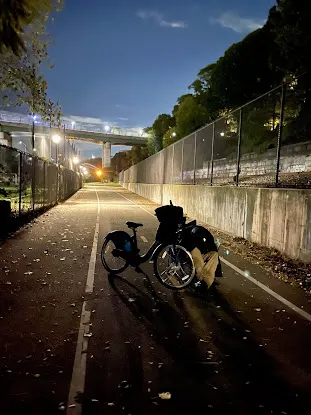
North River Wastewater Treatment Plant
Business Information
Category: Water treatment plant
Address: Hudson River Greenway New York, NY 10031 United States
District: Uptown Manhattan
Phone: +1 212-639-9675
Working Hours: open 24 hours
Location
About
North River Wastewater Treatment Plant: An Overview
The North River Wastewater Treatment Plant (NRWWTP) is a critical infrastructure facility located in Manhattan, New York City. Operated by the New York City Department of Environmental Protection (DEP), this plant plays a vital role in managing the city's wastewater and ensuring environmental sustainability. Established in 1986, the NRWWTP is designed to treat an average of 310 million gallons of wastewater per day, serving approximately 1.3 million residents in the surrounding areas.
Key Functions and Operations
The primary function of the North River Wastewater Treatment Plant is to process sewage and industrial waste before it is released into the Hudson River. The treatment process involves several stages, including preliminary treatment, primary treatment, secondary treatment, and disinfection. Each stage is crucial for removing contaminants and ensuring that the treated water meets stringent environmental standards set by regulatory agencies.
Preliminary Treatment: This initial phase involves screening out large debris such as plastics and other solids that could damage equipment or hinder subsequent treatment processes.
Primary Treatment: In this stage, wastewater is allowed to settle in large tanks where heavier solids sink to the bottom, forming sludge while lighter materials float to the surface and are removed.
Secondary Treatment: This biological process utilizes microorganisms to break down organic matter in the wastewater. Aeration tanks provide oxygen to support microbial growth, which effectively reduces pollutants.
Disinfection: Before the treated water is discharged back into the Hudson River, it undergoes disinfection using chlorine or ultraviolet light to eliminate any remaining pathogens.
Environmental Impact and Sustainability Initiatives
The NRWWTP not only focuses on treating wastewater but also emphasizes sustainability and environmental protection. The facility has implemented various initiatives aimed at reducing its carbon footprint and enhancing energy efficiency. For instance, it employs advanced technologies for energy recovery from biogas produced during sludge digestion processes.
Moreover, the plant actively participates in programs aimed at reducing stormwater runoff through green infrastructure projects across New York City. These efforts help mitigate flooding during heavy rainfall events while improving water quality in local waterways.
Community Engagement and Education
Understanding its role within the community, the North River Wastewater Treatment Plant engages with local residents through educational programs that promote awareness about water conservation and pollution prevention. The facility often hosts tours for schools and community groups to illustrate how wastewater treatment works and its importance for public health and environmental stewardship.
Conclusion
In summary, the North River Wastewater Treatment Plant stands as a cornerstone of New York City's infrastructure, ensuring that wastewater is treated efficiently while safeguarding public health and protecting local ecosystems. Its commitment to sustainability and community engagement highlights its integral role not just as a utility provider but as a responsible steward of environmental resources.
AUTHORITATIVE SOURCES
Information about wastewater treatment processes can be found on EPA's website.↩
Details regarding NYC's DEP operations are available on their official site NYC DEP.↩
Social Media
Business Districts and Categories
Technical Information
Machine ID: /g/1thln_sv
Feature ID: 0x89c2f66181c40447:0xb574ede509041a53
Created Date: 09 January 2025, 03:57
View Count: 35 views